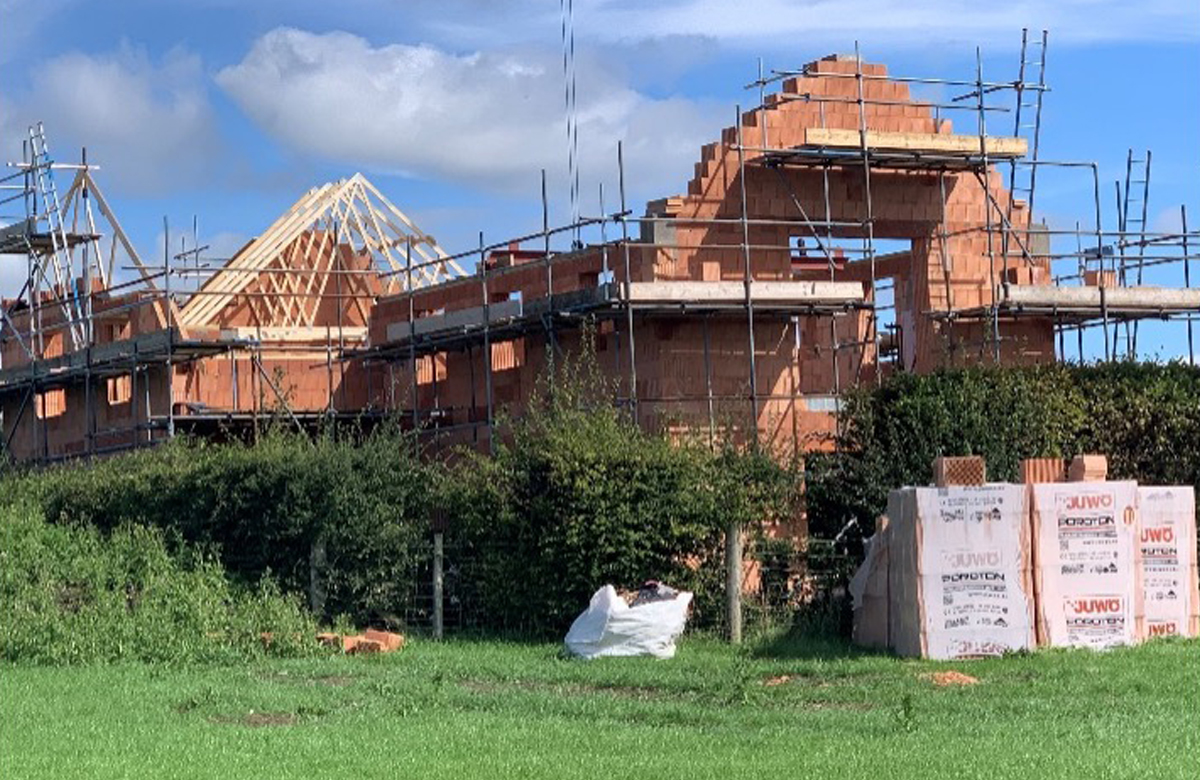
Building Regulations, as Acts of Parliament, are the minimum standard that a building should be built to, therefore it is encouraging when they are changing to provide higher, more energy efficient standards, which is what is happening to many of the approved documents this June and then at intervals through to 2025, in the hope that we achieve the carbon reductions needed to meet the COP26 requirements.
The main areas that are likely to impact those building and renovating their own homes are the changes to Part L1A and L1B, The Conservation of Heat & Energy.
From 15 June 2022, the building regulations will be requiring new homes to reduce the level of CO2, through emissions, by over 30%. This can be achieved by improving insulation levels, air tightness and adopting renewable heating technologies.
Fortunately, many of the manufacturers of modern construction methods, such as S.I.P’s, Timber frame & I.C.F, to name a few, have been ahead of the game for quite some time, with many systems and providers used to working to better standards, such as Passivhaus.


The self-build market, in particular, have always wanted to achieve the best that can be afforded, and many homes built by them have exceeded the standard requirements of the regulations.
Masonry construction is still favoured by many as the preferred method of construction. The ‘solid’ feel, ‘the built to last’ approach, but like other systems it too is having adapt to meet the higher levels of thermal insulation without creating complex detailing and design.
The simplicity of the thin joint systems which have been available throughout northern Europe for many decades, in particular the JUWO Evolved SmartWall block system, shows how easy it is to achieve a low energy structure that is thermal bridge free and does not require expensive installation teams to provide excellent thermal efficiency, air tightness and thermal mass, to help also overcome overheating issues, now covered in the new Part O of the building regulations.
The need to ‘keep things simple’ is key. As thermal performances improve, standard cavity wall construction is going to have to consider the structural stability of increasing widths of cavities as well as the impact of ‘chi’ values of wall ties and the materials that wall ties are manufactured from to maintain the structural strength.
The simplicity of the JUWO system is the elimination of the cavity so that the whole structure works as a monolithic wall. The application of the thin joint adhesive doesn’t require a bricklayer’s expertise and can be finished externally with either direct render, brick or stone slips, timber or decorative cladding, there are no restrictions.
Air tightness is achieved using a direct plaster finish internally, no need for expensive membrane layers and tapes. The JUWO Evolved SmartWall is a natural building system using modern methods of construction, making it fast to build with.
The sustainability of the system provides a product that uses less than 85% of the treated water used in cavity wall construction and at the end of its extensive lifespan, can be completely recycled back into the ground.
The choice for the self-builder is vast in the types of building systems available to them and not everyone is able to afford to build to better than building regulation standards, so, if this is the case, then make sure you choose a building system that can be improved at a later date, by either applying internal, or preferably, external wall insulation. Not all building systems can accommodate retrofit insulation, so take care in insuring that the system you choose can.
It is also vital to remember that product cost compared to installed cost can differ greatly. All material costs have increased greatly in the past few years and labour rates have also increased too, so the need to factor this into your budget is key.


Sue Dewhirst of JUWO Evolved SmartWall Ltd is an architectural technologist and on construction energy assessor with 40 years’ experience in the construction industry, working previously for a major insulation manufacturer and off-site building system manufacturers.